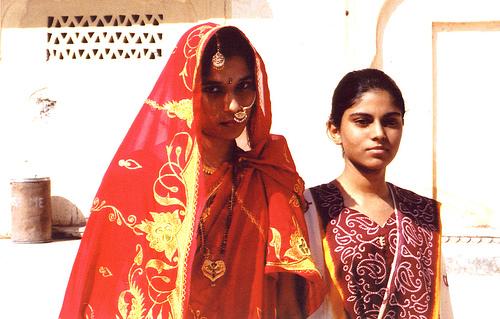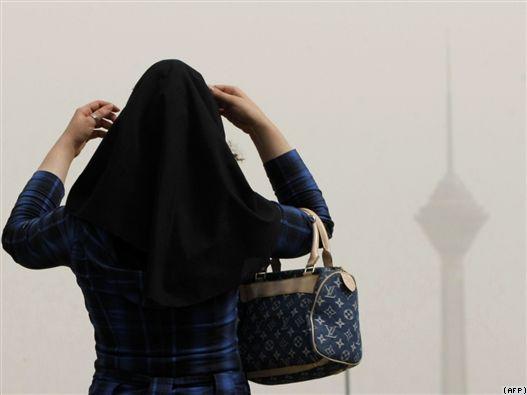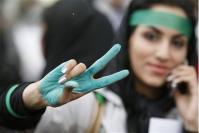Queen Rania Shares Her Views On The View
Related Links:
More About Queen Rania On AWR


 Wedad Lootah has received death threats and plaudits for her book on sex and Islam. Proud of her work, she says kicking down barriers and breaking taboos is important for her society. Is she right?
Wedad Lootah has received death threats and plaudits for her book on sex and Islam. Proud of her work, she says kicking down barriers and breaking taboos is important for her society. Is she right? Susan notes: an excerpt from an interesting New
York Times article to mark International Women's Day 2010...
Susan notes: an excerpt from an interesting New
York Times article to mark International Women's Day 2010...Obviously, the answer depends on how you define “best” — in absolute terms, relative to men, or some combination of the two?
You can choose from at least four different published rankings that consider some aspect of gender inequality that include the United States. None of them places us among the top 10.
I wish I could say which ranking I consider best, but they all have serious limitations. One consistent finding, however, is that public policies have a significant impact on gender equality, regardless of the level of overall economic development.
In 1995, the United Nations Human Development report introduced two measures designed to facilitate cross-country comparisons of the status of women. One, the Gender-Related Development Index (G.D.I.) takes as its starting point a Human Development Index based on life expectancy at birth, enrollment in schools, adult literacy and per capita gross domestic product.
The G.D.I. takes both absolute and relative levels of these factors into account, penalizing countries with a high disparity between men’s and women’s achievements. In 2007, the latest year for which data are currently available, the United States ranked 13th on the Human Development Index and 19th on the Gender-Related Development Index. Norway took first place on the H.D.I., but only second on the G.D.I. (Australia took the gold in G.D.I. rankings.)
A second United Nations measure, the Gender Empowerment Measure (G.E.M.), focuses more narrowly on relative levels of political participation and decision-making power, economic participation and earnings. The economic component, however, is influenced by absolute levels of income. As a result, low-income countries rank low. Sweden took top prize in 2007, with the United States in 18th place.
The organization Social Watch publishes a Gender Equity Index (G.E.I.) that combines elements similar to both the G.D.I. and the G.E.M., but relies entirely on relative measures, using a score of 100 to indicate perfect equality. This measure puts some less-developed countries (such as Rwanda) in the top category along with Scandinavian countries, with a score over 80; the United States has a score below 65.
The World Economic Forum published a Gender Gap Index (G.G.I.) in 2007 that combines quantitative measures with some qualitative measures based on a survey of 9,000 business leaders in 104 countries. They put the United States in 31st place.
Related Links:
More About The UN on AWR
 Susan notes: personally, I don't see why #brainquake and #boobquake need to be mutually exclusive - I believe in the value of both.
Susan notes: personally, I don't see why #brainquake and #boobquake need to be mutually exclusive - I believe in the value of both.Everyday women and young girls are forced to 'show off cleavage' and more in order simply to be heard, to be seen, or to advance professionally. The web is already filled with images of naked women; the porn industry thrives online and many young girls are already vulnerable to predatory abuse.
Violence against women and girls has a direct correlation to the sexualisation of women and girls.
The extent of their sexualisation is evident in the hundreds of replies that pour into the 'Boobquake' Facebook page where women write, apologetically: 'I don’t have boobs, not fair' or 'Hey, I only have a C cup...' and 'What about those of us who no longer have cleavage? They sag too low.'"
 Susan notes April 27: over 210,000 people around the world "attended" #boobquake yesterday. As I write this, it's still ongoing in some places, and no doubt will cause tremors worldwide for some time to come.
Susan notes April 27: over 210,000 people around the world "attended" #boobquake yesterday. As I write this, it's still ongoing in some places, and no doubt will cause tremors worldwide for some time to come. Susan notes: this great Carole King tune and live performance are
dedicated to the looney toons cleric in Iran who says immodest female
behaviour causes earthquakes.
Susan notes: this great Carole King tune and live performance are
dedicated to the looney toons cleric in Iran who says immodest female
behaviour causes earthquakes."Many women who do not dress modestly ... lead young men astray, corrupt their chastity and spread adultery in society, which increases earthquakes," Hojatoleslam Kazem Sedighi was quoted as saying by Iranian media.